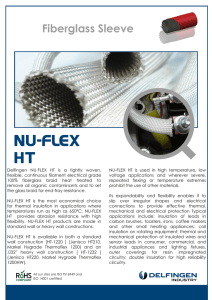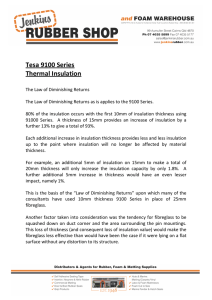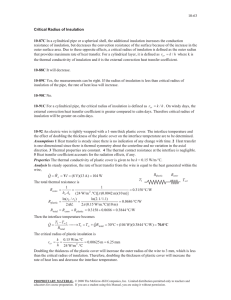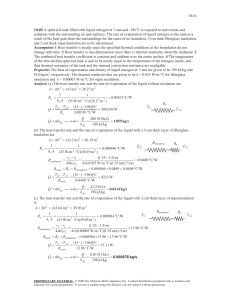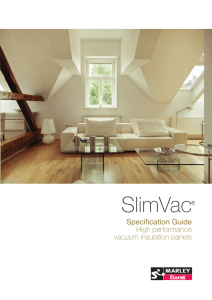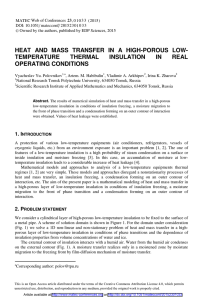10-19 sheet metal. The minimum thickness of insulation that needs to... 10-36
advertisement
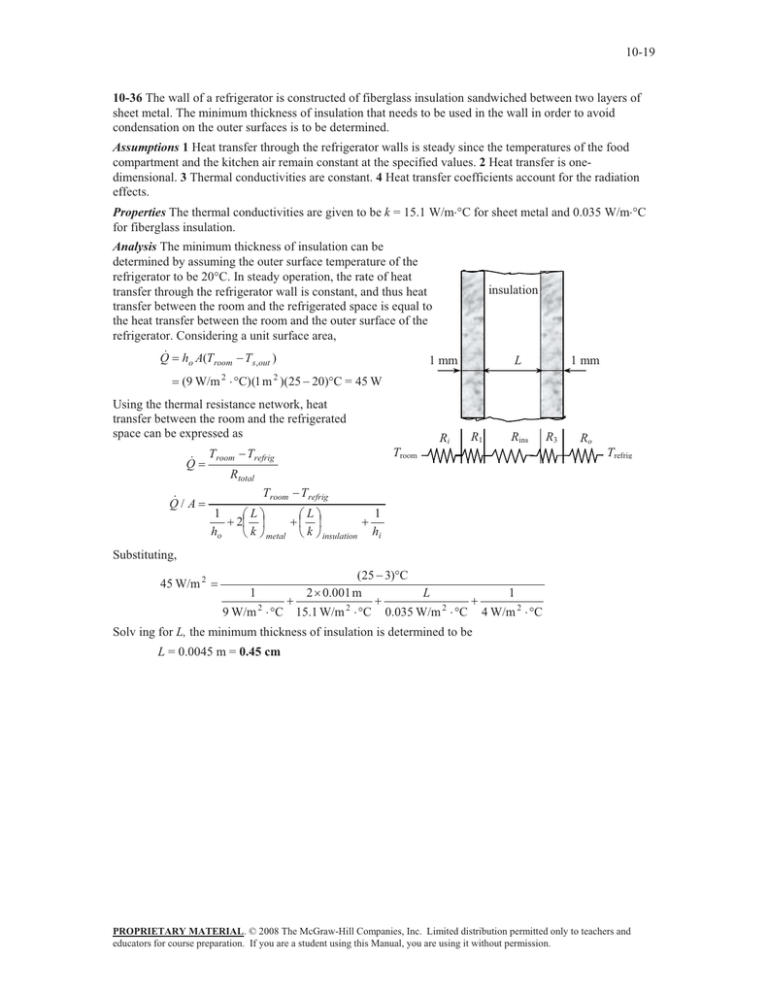
10-19 10-36 The wall of a refrigerator is constructed of fiberglass insulation sandwiched between two layers of sheet metal. The minimum thickness of insulation that needs to be used in the wall in order to avoid condensation on the outer surfaces is to be determined. Assumptions 1 Heat transfer through the refrigerator walls is steady since the temperatures of the food compartment and the kitchen air remain constant at the specified values. 2 Heat transfer is onedimensional. 3 Thermal conductivities are constant. 4 Heat transfer coefficients account for the radiation effects. Properties The thermal conductivities are given to be k = 15.1 W/m°C for sheet metal and 0.035 W/m°C for fiberglass insulation. Analysis The minimum thickness of insulation can be determined by assuming the outer surface temperature of the refrigerator to be 20qC. In steady operation, the rate of heat transfer through the refrigerator wall is constant, and thus heat transfer between the room and the refrigerated space is equal to the heat transfer between the room and the outer surface of the refrigerator. Considering a unit surface area, Q h A(T T ) 1 mm o room insulation L s , out 1 mm (9 W/m qC)(1 m )(25 20)qC = 45 W 2 2 Using the thermal resistance network, heat transfer between the room and the refrigerated space can be expressed as Q Q / A Troom Trefrig Troom Ri R1 Rins R3 Ro Trefrig Rtotal Troom Trefrig 1 1 §L· §L· 2¨ ¸ ¨ ¸ ho k k h © ¹ metal © ¹ insulation i Substituting, 45 W/m 2 (25 3)qC 2 u 0.001 m L 1 2 2 2 9 W/m qC 15.1 W/m qC 0.035 W/m qC 4 W/m 2 qC 1 Solv ing for L, the minimum thickness of insulation is determined to be L = 0.0045 m = 0.45 cm PROPRIETARY MATERIAL. © 2008 The McGraw-Hill Companies, Inc. Limited distribution permitted only to teachers and educators for course preparation. If you are a student using this Manual, you are using it without permission.


